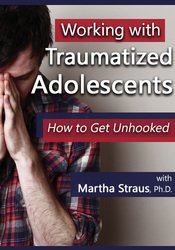

To work with troubled and traumatized adolescents, it’s crucial for therapists to first foster their own capacity for self-awareness and self-regulation. It’s not easy, especially when our young clients’ extreme reactions-ranging from angry arousal to frozen shutting down-can trigger our own sense of helplessness, failure, dissociation, and rejection. In this workshop, you’ll discover how to get unhooked from this nonfunctional cycle.
| File type | File name | Number of pages | |
|---|---|---|---|
| Handouts (0.27 MB) | 14 Pages | Available after Purchase | |
| Handouts Part 2 (0.09 MB) | 2 Pages | Available after Purchase |

Martha B. Straus, PhD, is an international trainer and speaker on topics related to child, adolescent, and family development, attachment, trauma, and psychotherapy. Straus’s postdoctoral years were spent in the department of psychiatry at Boston Children’s Hospital and Harvard Medical School. She’s the author of seven books including the highly acclaimed No-Talk Therapy for Children and Adolescents.
Speaker Disclosures:
Financial: Dr. Martha Straus maintains a private practice and is an instructor at Antioch University New England Graduate School and Smith College. She receives royalties as a published author. Dr. Straus receives a speaking honorarium, recording royalties, and book royalties from Psychotherapy Networker and PESI, Inc. She has no relevant financial relationships with ineligible organizations.
Non-financial: Dr. Martha Straus has no relevant non-financial relationships.
Please wait ...